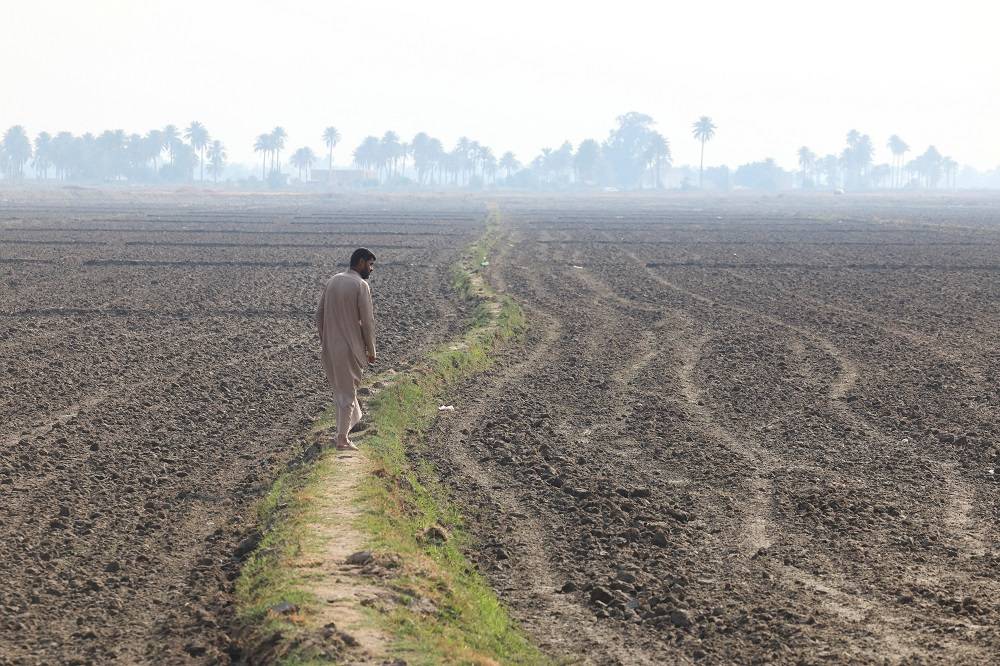Palestinians across the Middle East on Wednesday are marking the anniversary of their mass expulsion from what is now Israel with protests and other events across the region at a time of mounting concern over the humanitarian catastrophe in Gaza.
The Nakba, Arabic for “catastrophe,” refers to the 700,000 Palestinians who fled or were driven out of what is now Israel before and during the war surrounding its creation in 1948.
More than twice that number have been displaced within Gaza since the start of the latest war, which was triggered by Hamas' Oct. 7 attack into Israel. UN agencies say 550,000 people, nearly a quarter of Gaza's 2.3 million people, have been newly displaced in just the last week, as Israeli forces have pushed into the southern city of Rafah and reinvaded parts of northern Gaza.
“We lived through the Nakba not just once, but several times,” said Umm Shadi Sheikh Khalil, who was displaced from Gaza City and now lives in a tent in the central Gaza town of Deir al-Balah.
The refugees and their descendants number some 6 million and live in built-up refugee camps in Lebanon, Syria, Jordan and the Israeli-occupied West Bank. In Gaza, they are the majority of the population, with most families having relocated from what is now central and southern Israel.
Israel rejects what the Palestinians say is their right of return, because if it was fully implemented it would likely result in a Palestinian majority within Israel's borders.
PAINFUL MEMORIES The refugee camps in Gaza have seen some of the heaviest fighting of the war. In other camps across the region, the fighting has revived painful memories from earlier rounds of violence in a decades-old conflict with no end in sight.
At a center for elderly residents of the Shatila refugee camp in Beirut, Amina Taher recalled the day her family’s house in the village of Deir al-Qassi, in what is now northern Israel, collapsed over their heads after being shelled by Israeli forces in 1948. The house was next to a school that was being used as a base by Palestinian fighters, she said.
Taher, then 3 years old, was pulled from the rubble unharmed, but her 1-year-old sister was killed. Now she has seen the same scenes play out in news coverage of Gaza.
“When I would watch the news, I had a mental breakdown because then I remembered when the house fell on me,” she said. “What harm did these children do to get killed like this?”
Daoud Nasser, also now living in Shatila, was 6 years old when his family fled from the village of Balad al-Sheikh, near Haifa. His father tried to return to their village in the early years after 1948, when the border was relatively porous, but found a Jewish family living in their house, he said.
Nasser said he would attempt the same journey if the border were not so heavily guarded. “I would run. I’m ready to walk from here to there and sleep under the olive trees on my own land,” he said.
NO END TO WAR The latest war began with Hamas' rampage across southern Israel, through some of the same areas where Palestinians fled from their villages 75 years earlier. Palestinian gunmen killed some 1.200 people that day, mostly civilians, and took another 250 hostage.
Israel responded with one of the heaviest military onslaughts in recent history, obliterating entire neighborhoods in Gaza and forcing some 80% of the population to flee their homes.
Gaza's Health Ministry says over 35,000 Palestinians have been killed, without distinguishing between civilians and combatants in its count. The UN says there is widespread hunger and that northern Gaza is in a “full-blown famine.”
Israel says its goal is to dismantle Hamas and return the estimated 100 hostages, and the remains of more than 30 others, still held by the group after it released most of the rest during a ceasefire last year.
Israeli troops pushed into Rafah last week. Prime Minister Benjamin Netanyahu has portrayed the city on Gaza's southern border with Egypt as Hamas' last stronghold, promising victory.
But the militants have regrouped elsewhere in Gaza, even in some of the hardest-hit areas, raising the prospect of a prolonged insurgency.
The fighting in Rafah has made the nearby Kerem Shalom crossing — Gaza's main cargo terminal — mostly inaccessible from the Palestinian side. Israel's capture of the Gaza side of the Rafah crossing with Egypt has forced it to shut down and sparked a crisis of relations with the Arab country. Aid groups says the loss of the two crossings has crippled efforts to provide humanitarian aid as needs mount.
In a statement on Tuesday, Egyptian Foreign Minister Sameh Shoukry accused Israel “distorting the facts” and condemned its “desperate attempts” to blame Egypt for the continued closure of the crossing. Egyptian officials have said the Rafah operation threatens the two countries’ decades-old peace treaty.
Shoukry was responding to remarks by Israeli Foreign Minister Israel Katz, who said there was a “need to persuade Egypt to reopen the Rafah crossing to allow the continued delivery of international humanitarian aid to Gaza.”
Egypt has played a key role in months of mediation efforts aimed at brokering a ceasefire between Israel and Hamas and the release of hostages. The latest round of talks ended last week without a breakthrough.










